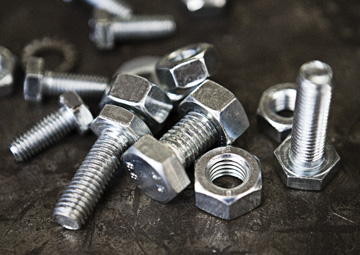The DIN 65151 standard, which has been used by the fastener industry for over 20 years, has been superseded by the new DIN 25201-4 B. It has introduced tough new test criteria that must be adopted by fastener manufacturers.
As described in more detail below, DIN 25201-4 B includes a new mandatory requirement to conduct reference and verification tests as a comparative assessment of the self-loosening behaviour of bolted joints. Also, whereas previously DIN 65151 only specified the test equipment that must be used, the new DIN 25201-4 B:
- Introduces a comparative assessment of the self-loosening characteristics of bolted joints
- Introduces a reference test to determine at what effective displacement the unsecured bolted joint loses its preload
- Introduces verification tests on a secured bolted joint, which confirms that the preload is not lost at the same effective displacement at which it was lost in the reference test
- Details the exact methodology of how the reference and verification tests must be conducted
- Requires a surface washer compliant with DIN EN ISO 7093-1 for hardness and roughness and DIN EN ISO 4759-3 for plane parallelism and flatness
- Introduces strict reporting requirements
- Specifies the test equipment to be used, such as a Junker Test Bench (as it was with DIN 65151).
DIN 25201-4 B requires that one reference test on an unsecured bolted joint must be performed to discover the effective displacement at which the bolted joint fully loses its preload after 300 load cycles, ±100 load cycles. Once the effective displacement has been discovered by the initial reference test, three subsequent reference tests must be performed to ensure that the effective displacement is correct.
The next stage of the test process requires twelve verification tests to assess the effect of the securing element. The same effective displacement determined by the reference test must be used. The securing element is considered to be adequate if the preload that remains after 2,000 load cycles is more than 80% of the initial preload. Finally, DIN 25201-4 B requires that a comprehensive test report must be prepared, detailing the exact processes and results.
Vibrationmaster’s J122 and J600 Junker Test Benches have been specifically designed to accommodate the requirements of the new DIN 25201-4 B. Our unique Variator, closed-loop system and computer control allow you to set your test regime criteria to meet the exact needs of the reference test and to recreate exactly the reference test criteria when you complete the verification tests.
A commented version of DIN 25201-4 B is available from our downloads page.
To find out more about how Vibrationmaster’s unique range of test equipment can meet your testing requirements, please contact us now.

